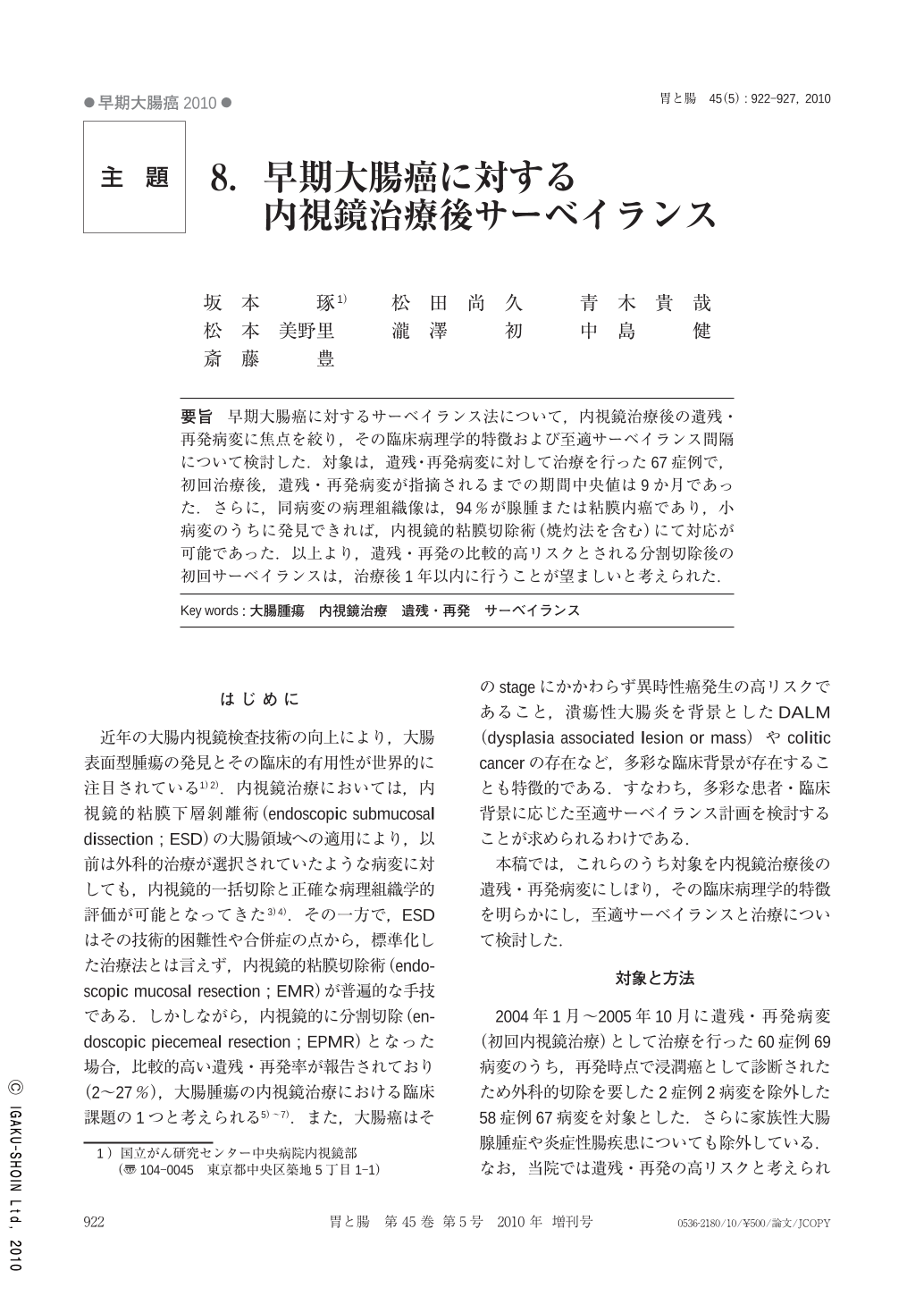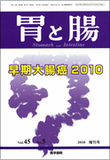Japanese
English
- 有料閲覧
- Abstract 文献概要
- 1ページ目 Look Inside
- 参考文献 Reference
要旨 早期大腸癌に対するサーベイランス法について,内視鏡治療後の遺残・再発病変に焦点を絞り,その臨床病理学的特徴および至適サーベイランス間隔について検討した.対象は,遺残・再発病変に対して治療を行った67症例で,初回治療後,遺残・再発病変が指摘されるまでの期間中央値は9か月であった.さらに,同病変の病理組織像は,94%が腺腫または粘膜内癌であり,小病変のうちに発見できれば,内視鏡的粘膜切除術(焼灼法を含む)にて対応が可能であった.以上より,遺残・再発の比較的高リスクとされる分割切除後の初回サーベイランスは,治療後1年以内に行うことが望ましいと考えられた.
In this study, we investigated clinicopathological characteristics of residual or recurrent tumors after endoscopic treatment and appropriate surveillance method. Sixty-seven lesions in 60 consecutive patients with local recurrence or residual tumor after endoscopic treatment were analyzed. First, almost all(88%)lesions were diagnosed at the first follow-up colonoscopy between 6 and 12 months. Secondly, on histopathological comparison of the initial and recurrent tumors in our series, the recurrence or residual tumor was mainly adenoma or intramucosal carcinoma(94%), and the histological grade of atypia did not increase in most cases, even when the initial treatment was intramucosal carcinoma. These results reveal that the achievement of complete remission after endoscopic piecemeal resection(EPMR)which is considered high risk for residual or recurrent lesions is dependent on suitable surveillance procedures. Surveillance at an appropriate interval after EPMR is crucial to achieve complete remission by conventional endoscopic treatment for almost all recurrent or residual tumors.

Copyright © 2010, Igaku-Shoin Ltd. All rights reserved.


